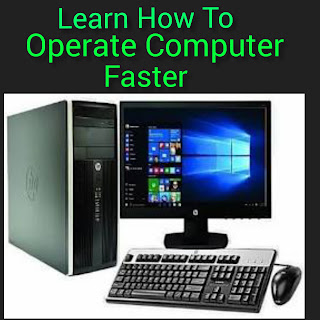Understand computer basics
Through practice and introductory courses at your library, you can start to understand computer basics. Consider familiarizing yourself with simple hardware like the monitor, mouse and keyboard. You might also want to learn about the different file types and develop an elementary understanding of how the internet works.
Try to expand your knowledge even more by using resources other than the ones at your library. For instance, you might enroll in a computer course in a traditional classroom setting or hire a private instructor. If you can use search engines, try looking for free educational materials online. Articles and videos may help you understand computer lingo and learn about the purposes of various programs.
Understanding the operating system
Every computer requires an operating system, which is what allows the software and hardware to communicate with a computer. Understanding what operating system is running on your computer helps you in finding help and knowing what is compatible with your computer. Become familiar with the operating system and version that is running on your computer.
Take additional classes
Once you understand computer basics, consider taking additional classes to refine your skills. Examples of classes you might want to take include:
Typing classes: A typing course can help you use your keyboard confidently and prepare you for a job that requires lots of typing.
Program-specific classes: Some classes focus on specific programs, preparing you to use word processors, spreadsheets and databases in the workplace.
Internet classes: By taking an internet safety class, you can avoid scams and protect your sensitive information from hackers.
Familiarize yourself with the hardware
Every computer is going to have a display. If it's separate from the computer it is called a monitor; if it is attached it is a screen. All computers have a keyboard for inputting information as well as a mouse or touch pad for navigation. Computers will also have a shell that connects everything together. Most computers today also have an optical drive that can read DVDs or CDs and allows you to install programs onto your computer.
Learn mouse and keyboard basics
The mouse and keyboard are your primary means of interacting with your computer. Take some time to get familiar with how they work and how you can interact with your operating system and programs.
Learn how to use a mouse to navigate. Your mouse allows for pinpoint navigation and control, and is necessary for a wide variety of activities. There are a variety of mouse types, and some have more buttons than others.
A mouse on a Windows PC usually has two buttons—the left button is your primary mouse button, while the right mouse button generally opens menus and features. You'll usually need to double-click (click twice quickly) to open files and folders.
A mouse on a Mac tends to have only one button. If you are used to using Windows and switching to a Mac, this may be confusing, especially when you're told you need to "right-click" something. To right-click on a Mac, you'll press and hold the Command key as you click your mouse button.
If you're using a laptop that has a trackpad (a finger-controlled mouse) rather than a separate mouse, you can move the cursor around by dragging your finger on the pad. Some trackpads have separate buttons you can click, while others don't appear to have buttons at all. On a trackpad, you'll usually click by double-tapping, or by pressing hard enough to click the entire pad with one finger.






.jpeg)


0 Comments